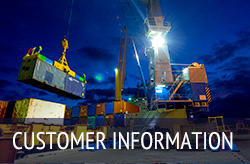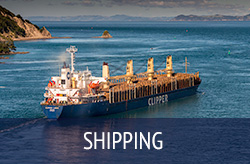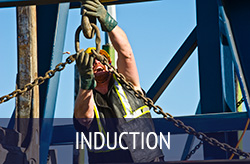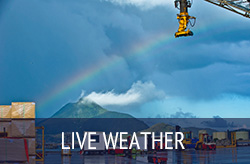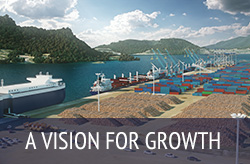Timber Fumigation - Methyl Bromide
Background
The NZ Government, through its agency the Environmental Protection Authority (EPA), is resolved to reduce the use of ozone depleting substances in accord with the Montreal Protocol.
The Montreal Protocol is an international treaty designed to protect the ozone layer by phasing out the production of numerous substances that are responsible for ozone depletion. It was agreed on 16 September 1987, and entered into force on 1 January 1989.
Methyl bromide is an ozone depleting gas. In 2010 the EPA's predecessor, the Environmental Risk Management Authority (ERMA), conducted an extensive reassessment of the use of methyl bromide for log fumigation. In October 2010 it released its decision: a 10-year deadline for industry to effectively achieve full recapture of all methyl bromide used in log fumigation.
However, in 2019 a timber industry group, Stakeholders in Methyl Bromide Reduction (STIMBR), applied to the EPA for a reassessment of this decision on the basis that full methyl bromide recapture was unachievable with current technology.
Public consultation began in mid-2019 and a hearing was held in August 2020. Given that the 2010 recapture definition was unachievable, the decision-making Committee amended the controls associated with recapture so that any risks associated with the use of methyl bromide were negligible while the benefits of use were retained.
The reassessment decision set a significantly higher recapture performance requirement (see ‘Summary’ below) than that requested by STIMBR, as the Committee considered that industry must be encouraged to invest in strategies to reduce methyl bromide emissions.
Other treatments to meet importing country requirements are available, such as debarking logs for China. In May 2022 the EPA also approved a non-ozone depleting fumigant called Ethanedinitrile (EDN) and subsequently Safe Work Instruments for EDN were approved by Worksafe. However, at this time, importing countries are yet to approve the use of EDN as a phytosanitary treatment.
Summary of the EPA’s decision (2021) on the use of Methyl Bromide in log fumigation
Prohibition of ship’s hold fumigation
Fumigation of ships’ holds using methyl bromide was prohibited from 1 January 2023, on the basis that no technology existed to recapture methyl bromide from ship’s hold fumigations. The health and environmental risks identified in respect of continued ship’s hold fumigation without recapture outweighed any benefits of this use.
Notification of fumigation
The Committee decided to strengthen notification obligations for methyl bromide fumigation operations, to ensure that affected parties are able to manage the risks associated with neighbouring fumigation events.
Use of recapture technology
For fumigations of containers (that is, enclosed spaces excluding fumigations under sheets), the recapture performance for each fumigation increases from 80% (from 1 January 2023) to 99% (from 1 January 2031).
For fumigations under sheets, the proportion of fumigations to have recapture technology applied increases from 50% (from 1 January 2022) to 100% (from 1 January 2025), minimum recapture performance increases from 30% (from 1 January 2022) to 99% (from 1 January 2035), and annual average recapture performance for a given site increases from 55% (from 1 January 2022) to 99% (from 1 January 2035).
Buffer zones
For container fumigations, the buffer zone is 10 or 25 m, depending on container volume.
For fumigations under sheets, the buffer zones range from 50 to 700 m, depending on dose rate and recapture performance.
Dosing to concentration
From 1 January 2024 at least half of fumigations of containers or under sheets must be dosed on the basis of measured headspace concentration, increasing to all fumigations from 1 January 2027. This will significantly reduce the amount of methyl bromide used.
Ventilation
For all types of fumigated spaces ventilation can only occur if the windspeed is at least 2 m/s.
Monitoring, recording and reporting
The Committee decided that, in order to monitor and manage the risks to human health, a number of operational parameters need to be recorded for each fumigation event and reported to the EPA. This information is intended to sit alongside the recording requirements specified by the Health and Safety at Work (Hazardous Substances) Regulations 2017 (HSWR). The information to be recorded includes operational details, as well as specific monitoring data and equipment details.
The Committee decided that an annual report summarising methyl bromide fumigation activities should be provided to the EPA to allow for verification of compliance. This report is to include information on recapture performance and other operational parameters, as well as developments in technology and processes to ensure that future recapture targets are met, and other actions taken to reduce methyl bromide emissions and use. Annual reports are to be provided to the EPA by 30 June each year for the preceding calendar year.
Notification of TEL exceedances
Tolerable Exposure Limits (TEL) are set for all toxic substances and represent the concentration of that substance that cannot be exceeded to protect the public. In the event that methyl bromide concentrations beyond the buffer zone exceed the TEL in air, the Committee decided that the relevant territorial authority needed to be notified within 24 hours. This will allow the territorial authority to respond to such an event in a timely manner, and to manage any health or environmental risks that could arise.
Fumigation Operations
Northport Limited provides storage and port services for forestry products at the Northport common user facility. Northport does not undertake or provide fumigation services.
The actual fumigation is something that the exporters arrange themselves because they are required to do so by the importing country. Fumigation is also used as a biosecurity tool to prevent pests entering NZ. It is undertaken at the Northport facility by a company that specialises in fumigation called Genera Limited.
Fumigation by methyl bromide gas is a legal activity conducted on our site by qualified operators working for Genera. It takes place with our consent, as long as the fumigation company abides by the procedures we have in place to mitigate risk.
Under our Hazardous Substances Consent issued by the Whangarei District Council, Northport is required to have procedures in place to manage the use and control of any hazardous material at the port, including when this use is by any organisation operating at the facility.
For methyl bromide fumigation the procedures outlined in our Port Procedures Guide are based on the EPA (Environmental Protection Agency), international maritime and Worksafe requirements. Genera and any other fumigators must follow them.
Northport Ltd does everything we can to check that they do so. We do this in conjunction with the EPA and WorkSafe (within MBIE), who monitor the technical and health aspects of these fumigators’ operations at Northport. Together, we check that methyl bromide gas emission levels resulting from fumigation at Northport do not breach those considered safe by the EPA or Worksafe.
To date there have been no recorded breaches.
There are four levels of checks in place to ensure breaches do not take place:
- Internal fumigator checks, measurements and record-keeping
- Random air-sample checks by Northport at the boundary of fumigation operations at the port (different to, and contained within, the wider Northport boundary), using the appropriate, calibrated equipment. These are conducted randomly by Northport every 4-6 weeks when fumigation is taking place
- Independent auditing and air sampling commissioned by fumigators and Northport on an irregular basis
- Auditing of fumigators’ systems, records and processes by WorkSafe
In addition, under the EPA requirements for use of methyl bromide an annual return / report covering a variety of topics must be submitted to the EPA, DHB and WorkSafe by 30 June for the preceding year.
The Ministry of Health determined in 2005 that there is no evidence to indicate that exposure to methyl bromide within the prescribed limits set by the EPA is connected with Motor Neurone Disease or any other health condition.
However, the allegation that methyl bromide increases the risk and incidence of Motor Neurone Disease has certainly captured our attention and is not something we take lightly. We work, live and play near to where it’s used so you can be absolutely certain that in addition to our professional Duty of Care, we take a very strong personal interest in this matter too.
We trust what the experts tell us. We’re port operators, members of the community and parents, husbands, wives, not scientists.
This does not mean we’re helpless onlookers; we do everything we can to check that Genera operates according to our Port Procedures Guide, the only procedures we are able to monitor and entitled to enforce. As already stated, we do this alongside – and in close collaboration with – the EPA and WorkSafe.
We are able and willing to answer questions about our port procedures for methyl bromide fumigation and monitoring.
However, we are not qualified to answer questions about the safety of emission levels approved by the EPA, or about the process, safety and monitoring of methyl bromide fumigation generally. For this we would direct you to the websites of the EPA, the log exporting companies, Genera, Whangarei District Council or STIMBR – a group representing a wide range of organisations seeking environmentally and socially acceptable alternative phytosanitary treatments to methyl bromide, and/or technologies and tools to manage methyl bromide emissions.
Questions and Answers
How often is the methyl bromide fumigant applied and at what times of the day?
There is no strict routine – it all depends on variables such as when logs/timber is due for shipment, how many vessels are in port, the time of departure of each ship, etc.
Are there any plans for a contained fumigation facility at Northport?
This question would best be directed to log exporters and Genera. Whatever facilities exist will, as they do now, need to comply with EPA controls and Northport procedures, which will always be based on the best available science.
Is Northport 100 percent certain that methyl bromide poses no risks to any human beings or animals living nearby?
We’re port operators, members of the community and parents, husbands, wives, not scientists and we trust what the experts tell us. The Ministry of Health determined in 2005 that there is no evidence to indicate that exposure to methyl bromide within the prescribed limits set by the EPA is connected with motor neurone disease or any other health condition when EPA controls are complied with as they are.
That said, we do everything we can to ensure that Genera operates according to our Port Procedures Guide, the only procedures we are able to monitor. We do this in conjunction with the EPA and WorkSafe, who monitor the technical, health and safety aspects of Genera’s operation.
We assure you that there have been no recorded breaches of the EPA safe limit guidelines.
Are logs from other locations in New Zealand fumigated at Northport? If so, where?
Timber and forest products are often loaded at more than one port and then fumigated together onboard the ship in transit. The start of this fumigation process is undertaken at the port of departure, including Northport.
What is the tolerable exposure limit of methyl bromide gas?
The tolerable exposure limit (TEL) is an average 0.333 ppm over any 24hr period, or an average 0.0013 ppm over a 12-month period (EPA decision dated 11 August 2021, Appendix D page 58, and subsequent re-issued HSNO approval for Methyl Bromide - HSR001635).
Has any testing been undertaken to see if any methyl bromide gas is reaching residential areas (including Reotahi which is directly opposite the port on release from the tarpaulins or ship’s hold?
No. The closest residential area to the port is Reotahi, some 800m away across the water. If methyl bromide emissions are not detectable at the boundary of Genera’s operation at Northport they would certainly not be detectable at the port boundary – still less in Reotahi.
Our readings tell us that methyl bromide gas - at the concentrations used for fumigation in New Zealand- dissipates to an unmeasurable level within a very short distance of the source. We test 50 meters from source (ie; from logs being fumigated at the facility) and readings are below the tolerable exposure limits set out by the EPA and deemed acceptable by WorkSafe. So far we have recorded no breaches of the EPA safe limit guidelines.
Then there is the practicality of it. There is no technology available to detect methyl bromide gas independently of other volatile organic compounds (VOCs) in operational situations. You would only need a passing truck to be belching out exhaust fumes for a reading to be recorded that would have nothing at all to do with methyl bromide.
So if the Environment Court is concerned about "worrying" levels of the gas at the Port of Tauranga boundary during fumigation, how does this compare to your claim that methyl bromide gas dissipates to an unmeasurable level within a very short distance of the source?
We can only focus on what we know – the fumigation operation at Northport. The important thing for us is that our readings, taken at the log storage/buffer zone boundary of fumigation operations at Northport, remain below the tolerable exposure limits set out by the EPA and deemed acceptable by WorkSafe. That’s where we are focusing our attention.
So should we be concerned about methyl bromide use at Northport?
The EPA tells us that in the concentrations used by Genera, and under the conditions stipulated by the EPA, it’s OK for use (EPA decision dated 11 August 2021, Appendix D page 58, and subsequent re-issued HSNO approval for Methyl Bromide - HSR001635).
In terms of monitoring, does Northland Regional Council (NRC) have a conflict of interest given its indirect stake in Northport Ltd. How does Northport respond to this claim?
Our Hazardous Substances Consent is issued by the Whangarei District Council, not Northland Regional Council. The NRC has responsibility for all air discharges throughout Northland through the Regional Plan, including any air discharges at the Northport Facility. However, the national regulators of the activities described above are the EPA and WorkSafe NZ, both of whom are independent of the local and regional councils.
Additional information
Methyl bromide monitoring – Annual reports to the EPA
Importing or exporting ozone depleting substances in New Zealand
If, having read this, you have further questions please contact David Finchett at Northport Ltd (09-4325062 / david.finchett@northport.co.nz). We’d be delighted to provide whatever further clarification or reassurance that we can.






